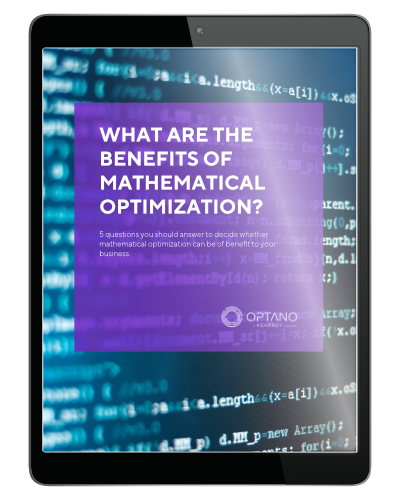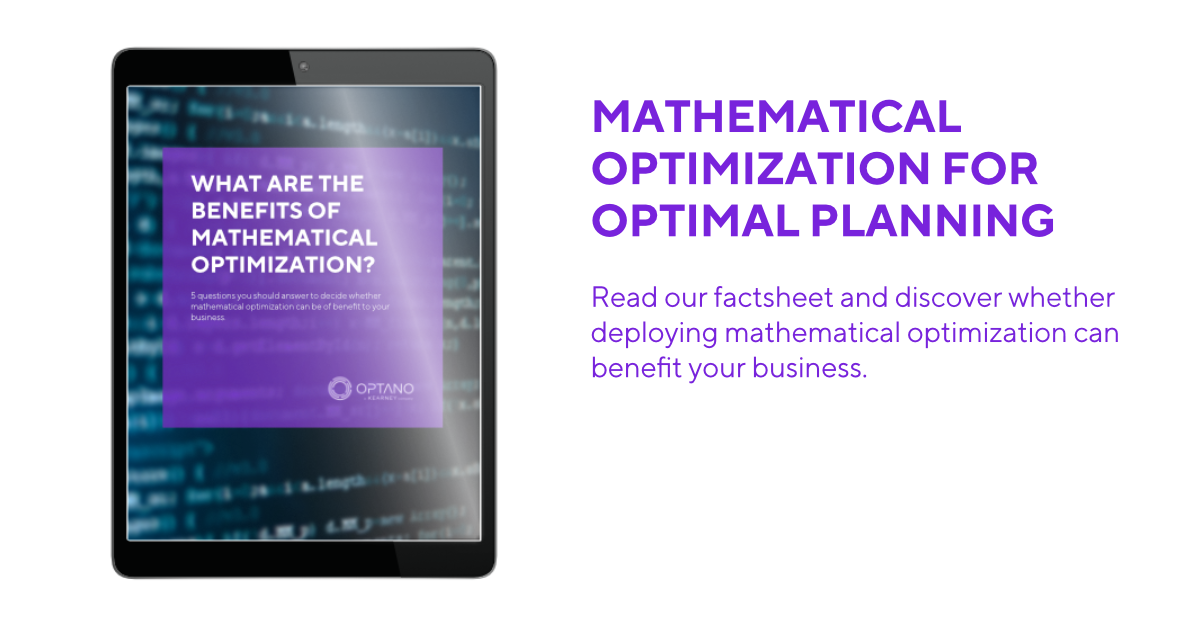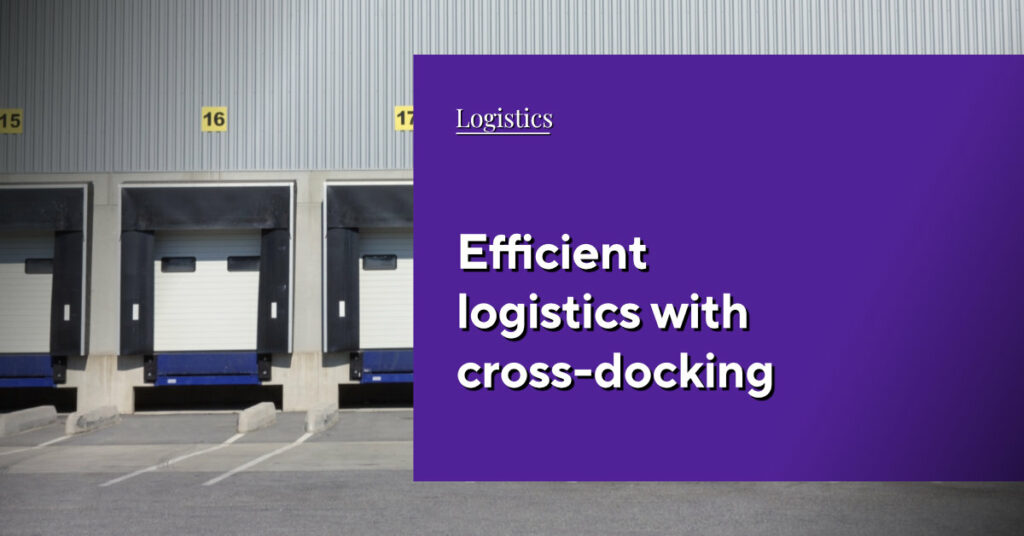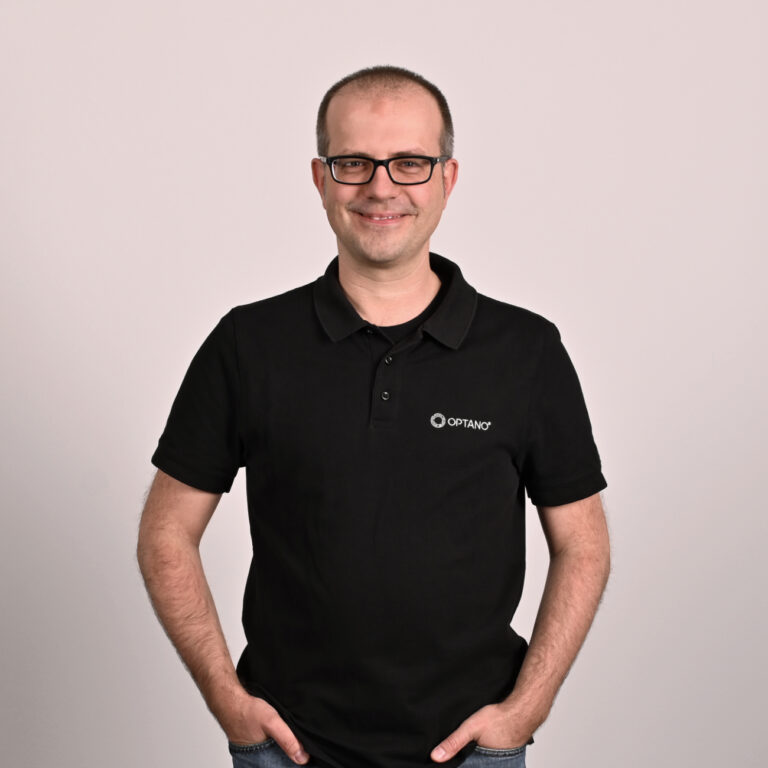Operations Research
in daily life
Discrete mathematics, stochastics, linear and nonlinear optimization, dynamic optimization, combinatorial optimization, dynamic programming, heuristic process, decision theory, game theory, graph theory, queuing theory, simulation, distribution types, random variables, the Monte-Carlo Method, Markov Processes, algorithms….
If most of these expressions are unfamiliar to you, you are not alone – unless you specialize in higher mathematics. Otherwise you are unlikely to encounter any of them in the future either – at least not consciously.
Algorithms and co. in daily life
Those who think that this mathematical complexity has nothing to do with our daily lives is mistaken. This is precisely what makes this topic so fascinating: How to conceal complexity so that the user is barely aware of it?
But apart from mathematicians and especially OR experts, who actually contemplates how the route of their recently
delivered parcel is calculated? Or who is bothered about the complex calculations that are behind bus, train and flight timetables? This means taking a number of variables (frequently many millions) into account in order to achieve the
optimal result. The passengers’ needs, on the other hand, are about getting onto their chosen mode of transport and reaching their destination on time.
Many plans and one objective
“Reaching our destination” is also the reason why we now use navigation devices in our cars day in, day out. It couldn’t be easier: enter the destination, start the navigation and a voice tells us what we have to do next.
Yet, if we take a look at a map, we realize how difficult it is to plan the ideal route. Even for a longer route with just one destination – for instance, Munich Central Station to Hamburg International Airport – there are countless alternatives. And what the map cannot show us at a glance are the traffic lights at crossroads, one-way streets, road closures, traffic jams, etc.
The navigation system takes this problem off our hands and solves it – with the aid of Operations Research (OR). Here, the route planner uses algorithms which are also deployed in OR and which function as follows: All calculations are based on a model. The navigation system is limited here to the aspects which are decisive for modeling , i.e. the type of road, speed regulations, road closures or traffic jams. Other aspects are ignored depending on the planning: e.g. motorization, the weather, breaks… In this way, the navigation system filters out the shortest/fastest connection between two places so that in the end we hear a voice telling us “You have reached your destination!”
Whether it’s shorter routes for drivers, train connections with few changes or fast parcel delivery, optimization procedures which calculate using models and algorithms, ultimately have the same objective -a result which best corresponds to the users’ wishes.

Are you interested in our factsheet?
What are the benefits of mathematical optimization?
More or less complex?
There is no doubt that optimization procedures are extremely complex. During the development process, however, the question of just how visible complexity should be becomes a tightrope act. How much complexity is reasonable for the user? How much complexity does the user want personally? Which adjustments should the user be able to make – and how much needs to be known about the internal calculation methods?
While working together on the development process, future users tend to bring the optimization problem to the surface – and bring the complexity along with it. Of course, the user should be able to change data input or correct input fields. Furthermore, scenario analyses enable us to experiment with all kinds of different data and so the user feels that he has the software under his control.
The complexity of a procedure is far greater the more decisions are made during the procedure itself. But often this results in better decisions as it is easier for the development team to plan and check them as they go along. Decisions which are made only by the user don’t always lead to a useful application because there isn’t the time to thoroughly evaluate and check the input.
Past experience shows that OR integration into software is at its most successful when complexity is concealed and the interface is kept simple.
More interesting articles
Back to the navigation system...
If we go back to our example of the navigation system this means that the route planner application is simple. The user – in this case, the driver – has one or two entry options and still there are questions such as: Do I want to avoid the highway? Is there a stop in-between? Or do I want to go somewhere completely different? If a traffic jam occurs all of a sudden, the driver is given the choice of keeping to the planned route or having a new one calculated. Ultimately, this decision is solely up to the driver.
If the complexity of the navigation system weren’t so well concealed and the application weren’t so easy, the following could happen: Every time you turn a corner, the familiar voice will ask: “Do you really want to take this road?” and maybe even: “What is the average speed you wish to drive on this road?”
The user would have to make an entry each time. But he doesn’t have the time and the necessary background information to make the best choice.
Which is why we prefer to let the navigation system decide for us – with all its complexities and mathematical possibilities. And the possibilities are becoming increasingly greater; the latest generation of route planners has learned the driver’s behavior, e.g. the “normal” speed on the motorway – and takes this into account when making future calculations.
Operations Research for more complex planning problems- with OPTANO
OPTANO uses OR procedures such as mathematical optimization to find solutions to your most complex planning problems and supports your business in its decision-making processes. It is can be customized to meet your requirements and helps in the optimization of supply chain management, production planing, network planning and many more. Based on Prescriptive Analytics methods, OPTANO provides sound recommendations on the best course of action to take in your strategic, operational and tactical planning processes, ensuring that they are efficient, fast and flexible.
And one last thing: The integration of Operations Research into software is the most successful when the result is simple and it is easy to use. Therefore, users can put their trust in the know-how and experience of OPTANO’s OR experts. The result is a software interface that fits the application precisely.
Have you got your copy of our factsheet on this topic yet?

In our factsheet “What are the benefits of mathematical optimization?” we ask 5 questions to help you assess whether mathematical optimization brings benefits to your organization.
To obtain our factsheet, all you need to do is enter your contact details in the space below. A pop-up window will then open to download the whitepaper. Please note that by providing us with your email address, you agree that we may contact you on this topic. You may revoke this agreement at any time by contacting [email protected].
- May 18, 2022






